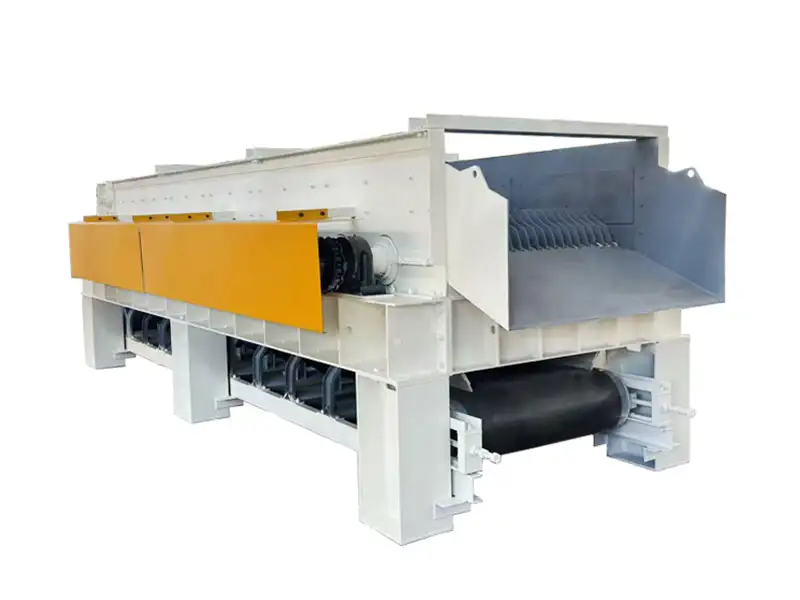Understanding Mud and Stone Separators: Essential Industrial Solutions for Effective Material Handling
Nov 08,2025

In the realm of industrial equipment, mud and stone separators are specialized devices designed to remove contaminants such as mud, stones, and other impurities from materials. These separators are particularly valuable in industries dealing with aggregates, construction materials, mining, and wastewater treatment. Their primary function is to ensure that the final product is of high purity and quality, which is essential for meeting industry standards and customer expectations.
The operation of a mud and stone separator is based on the principle of physical separation. These devices often utilize various techniques, including vibration, gravity, and centrifugal force, to effectively separate different materials. The design of these separators can vary, but most feature a screen or mesh that allows smaller particles, such as mud or silt, to pass through while retaining larger stones or debris. This functionality not only enhances the quality of the end product but also reduces wear and tear on downstream equipment, leading to increased operational efficiency.
One of the significant benefits of employing mud and stone separators is the reduction of material waste. By efficiently separating unwanted materials, industries can maximize the use of their resources, ultimately leading to cost savings. Additionally, cleaner materials can improve the overall sustainability of production processes, aligning with modern environmental standards.
Mud and stone separators are widely used in several applications. In the construction industry, they are essential for processing aggregates, ensuring that sand and gravel are free from unwanted particles. In wastewater treatment, these separators help in the removal of solids from liquids, contributing to cleaner effluent. Furthermore, in the mining sector, they assist in the processing of ores, enhancing the quality of the extracted materials and increasing the yield of valuable minerals.
As the demand for high-quality materials continues to rise, the importance of mud and stone separators cannot be overstated. Industries are increasingly recognizing the need for efficient separation processes to enhance product quality, reduce environmental impact, and improve operational efficiency. When selecting a mud and stone separator, it is essential to consider factors such as the specific application, material characteristics, and the desired level of separation to ensure optimal performance.
In conclusion, mud and stone separators are vital tools in the industrial sector, providing effective solutions for material handling and contamination removal. Their ability to enhance product quality while promoting sustainability makes them an indispensable component in many industrial processes. Understanding the functionality and benefits of these separators can lead to improved operational outcomes and a more efficient use of resources.
The operation of a mud and stone separator is based on the principle of physical separation. These devices often utilize various techniques, including vibration, gravity, and centrifugal force, to effectively separate different materials. The design of these separators can vary, but most feature a screen or mesh that allows smaller particles, such as mud or silt, to pass through while retaining larger stones or debris. This functionality not only enhances the quality of the end product but also reduces wear and tear on downstream equipment, leading to increased operational efficiency.
One of the significant benefits of employing mud and stone separators is the reduction of material waste. By efficiently separating unwanted materials, industries can maximize the use of their resources, ultimately leading to cost savings. Additionally, cleaner materials can improve the overall sustainability of production processes, aligning with modern environmental standards.
Mud and stone separators are widely used in several applications. In the construction industry, they are essential for processing aggregates, ensuring that sand and gravel are free from unwanted particles. In wastewater treatment, these separators help in the removal of solids from liquids, contributing to cleaner effluent. Furthermore, in the mining sector, they assist in the processing of ores, enhancing the quality of the extracted materials and increasing the yield of valuable minerals.
As the demand for high-quality materials continues to rise, the importance of mud and stone separators cannot be overstated. Industries are increasingly recognizing the need for efficient separation processes to enhance product quality, reduce environmental impact, and improve operational efficiency. When selecting a mud and stone separator, it is essential to consider factors such as the specific application, material characteristics, and the desired level of separation to ensure optimal performance.
In conclusion, mud and stone separators are vital tools in the industrial sector, providing effective solutions for material handling and contamination removal. Their ability to enhance product quality while promoting sustainability makes them an indispensable component in many industrial processes. Understanding the functionality and benefits of these separators can lead to improved operational outcomes and a more efficient use of resources.
PREVIOUS:

